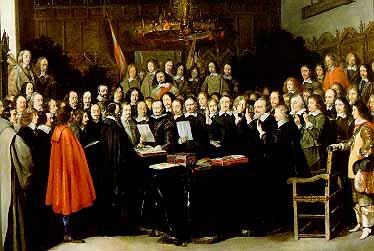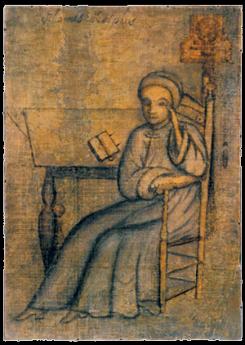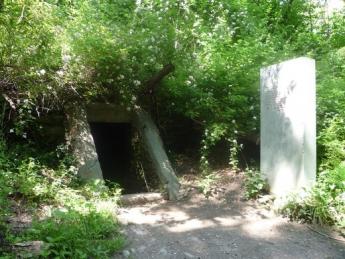Related Topics
The Park and Beyond: East Falls, Germantown, Mt. Airy and Chestnut Hill
Fairmount Park is large enough to split the City from its suburbs, and is partly a playground, partly a museum. East Falls, Germantown and Chestnut Hill are almost a separate world on the far side of the park.
To Germantown, a Short Appreciation
Seven miles from the heart of Philadelphia, Germantown was once a separate town, the cultural center of Germans in America. Revolutionary battles were fought here, it was briefly the capital of the United States, and it still has an outstanding collection of schools and colleges.
Musical Philadelphia
Quakers never cared much for music, but the city has nonetheless musically flourished into international fame. At the same time, quarrels and internal battles have also been world class.
Right Angle Club: 2013
Reflections about the 91st year of the Club's existence. Delivered for the annual President's dinner at The Philadelphia Club, January 17, 2014.
George Ross Fisher, scribe.
City Hall to Chestnut Hill
There are lots of ways to go from City Hall to Chestnut Hill, including the train from Suburban Station, or from 11th and Market. This tour imagines your driving your car out the Ben Franklin Parkway to Kelly Drive, and then up the Wissahickon.
Wizards of the Wissahickon

|
| Peace Treaty of Westphalia |
The Holy Roman Empire comprised about 120 little kingdoms along the Rhine River, mostly Germanic, stretching from Amsterdam to Switzerland, and loosely associated with the Papal States extending onward to Sicily. Napoleon and Bismark unified much of this territory into what we might now recognize as a map of Western Europe. Before that, it had been roughly the battleline between Catholic and Protestant populations, provoked by the influence of Martin Luther spreading through what had for centuries been an entirely Catholic region. After the Treaty of Westphalia in 1648, it became a rule of the Holy Roman Empire that the state religion of a country was whatever the local king said it was.
With this history and more, it is unsurprising that the region was filled with small stranded religious sects who were out of local secular favor. William Penn's mother was Dutch, so he could speak the local language and had lived in the region. When this immensely rich Englishman acquired the colony of Pennsylvania, it was natural for him to offer religious sanctuary to Germanic sects as well as to the dissident Quakers of England, in that free-religion colony he planned for his wilderness region, larger than the whole of England.

|
| Johannus Kelpius |
From this history it emerges that "Dominie Johann Jacob Zimmerman, a noted German mathematician, astronomer, and defrocked Lutheran minister", led a remarkably well-educated group of "Pietists, millennialists, Rosicrucians, and Separatists" to London and then to Rotterdam, picking up some Swiss, Transylvanians, Swedes and Finns. Among them was a young Transylvanian scholar originally named Kelp, which in scholarly tradition had changed to Johannus Kelpius. Responding to the astronomical calculations of Zimmerman, it was believed the millennium of peace and tranquility predicted by the Book of Revelations would begin more or less immediately. The group resolved to accept the offer of William Penn and go to Pennsylvania to enjoy that millennium. Unfortunately, Zimmerman died as the ship was departing and young Kelpius, who himself was later to die of tuberculosis at the age of 34, was appointed the new leader.

|
| Kelpius Cave |
Evidently, on arrival in Philadelphia in 1694, they encountered earlier inhabitants who had a tradition of a bonfire midway between the solstice and the equinox. Their fire was on top of "Fire Mount", and was taken as a sign that the millennium was now beginning. The group moved up to the top of the Wissahickon, next to where Rittenhousetown is now to be found, and just beyond it in Roxborough was a hollowed out formation resembling an amphitheater. It is now believed an astronomical observatory was created on the projecting rock next to the present foot of the Henry Avenue bridge; it was at that place that two celibate monasteries (for men and for women) lived together, slowly dying out as celibate communities necessarily do. Eventually, the death of Kelpius caused the final break-up of the little colony, but not before it had established itself as a center of music, poetry, and literature for the growing Germanic settlers of the surrounding states. One group of them went further west to the Cloister at Ephrata, and others scattered in different directions. It is notable that a great many names of settlers in the Kelpius colony are still to be found in Germantown, Philadelphia, and Harrisburg, although tracing the genealogy has been difficult. Some of the music has been found in scraps and reconstructed, and discovered to be quite sophisticated and beautiful, although precise authorship remains uncertain.
REFERENCES
| An Introduction to the Music of the Wissahickon Glen: Lucy E. Carroll, DMA, | Kelpius Society |
| The Hymn Writers of Early Pennsylvania: Lucy E. Carroll, ISBN: 978-1606475201 | Amazon |
Originally published: Wednesday, February 06, 2013; most-recently modified: Friday, May 31, 2019